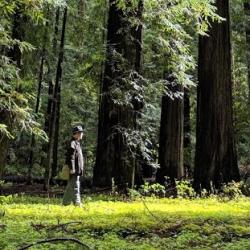The very term animism was used by early anthropologists to conjure a more “primitive” world before the eyes of their readers. But there is another part to the conversation.
To be an animist means to understand that the worlds of both the spirit and the physical exist. The two can be experienced, side-by-side. This attitude is not a matter of religion, or belief. It becomes, in time, a matter of phenomenology, and eventually simple practicality.
The idea that the world is alive is kind of cool. But the experience of animism can go so far past that there there are literally no words.
Our minds can easily understand that this rock, or that tree, is alive. That is where we can begin.
Sitting with a Tree
This is a simple exercise to begin to experience the world animisticly. To start, go ahead and find a decent-sized tree, somewhere a bit private and outside enough that its roots are in the earth.
A tree in your back yard would be fine. But the more wild the setting, the easier it will be to get results. A bit of that is the tree, and some of it is you. Simply being in the wilderness will help you break the patterns of interaction that we all develop living in society.
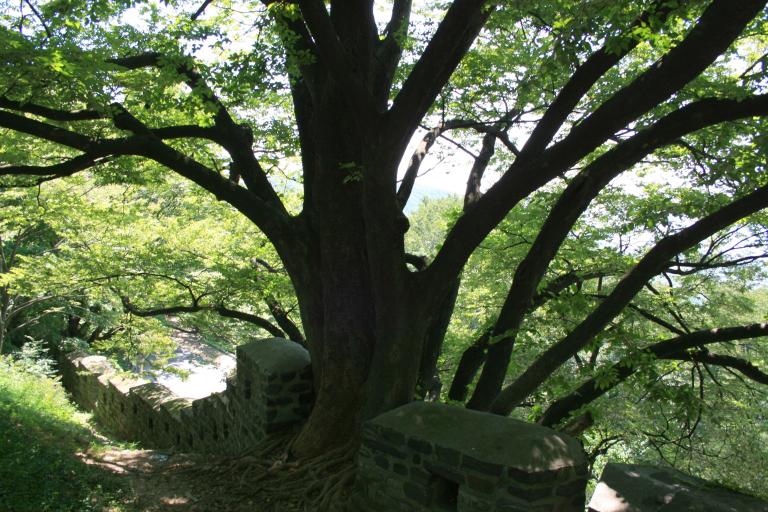
If you live somewhere treeless, you might find some other feature. For this exercise, you will not want to seek out something with the power to overwhelm you. A mountain, for example, would be a poor choice.
If a tree is not an option, I recommend something that is alive, but does not move. The idea is to find something that lives for quite some time, and yet does not stir from the place it lives.
Okay, now here is the hard part to wrap your mind around. I want you to introduce yourself to the tree.
Wait. What does that even mean?
There is a feeling we get when we meet another person. We look at them, get an idea of who they are relative to us, and then we approach and try to allow connection.
In general, people connect easily to one another — we think this is natural, but it is a skill. And since it is a skill, we can practice, develop, and expand it.
You can connect with a tree. As you might imagine, however, trees react slowly to people. Worse, they are not super-impressed by humans.
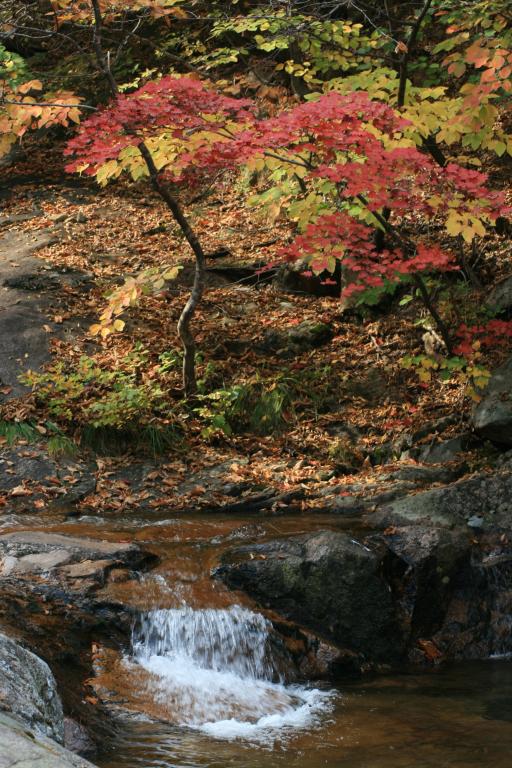
So, you will need to do your best to hold yourself “open” for a while and let yourself harmonize with the tree.
How can that be done? My suggestion is to grab a seat near the tree and close your eyes. Visualize walking up to the tree and offering to shake his or her hand.
When you get to that point where the tree would respond, be open. At first, this will be a bit difficult. Over time, it will get easier.
Eventually, the tree will become aware of you as well. It is quite an experience.
This might be something that you manage on the first try, or it could take a while. Either way, this is an excellent daily or weekly practice.
ProTip: If you practice this on a regular basis you might find, like I did, that connecting with other people also becomes easier. This was a large part of how I got over my “natural” shyness. I stopped trying to connect to people in my head, and started connecting to them with my heart.
Going Deeper
Sitting with a tree works because, as physical beings, we humans have very little in common with trees. While we move around with our feet, they rest in one place. While we struggle for sustenance daily, their perspective is a matter of years.
And yet we are both alive. As spiritual beings, there is less of a gap. Practicing sitting with a tree is a way of accessing your own spirit, but in a very practical and unassuming way.
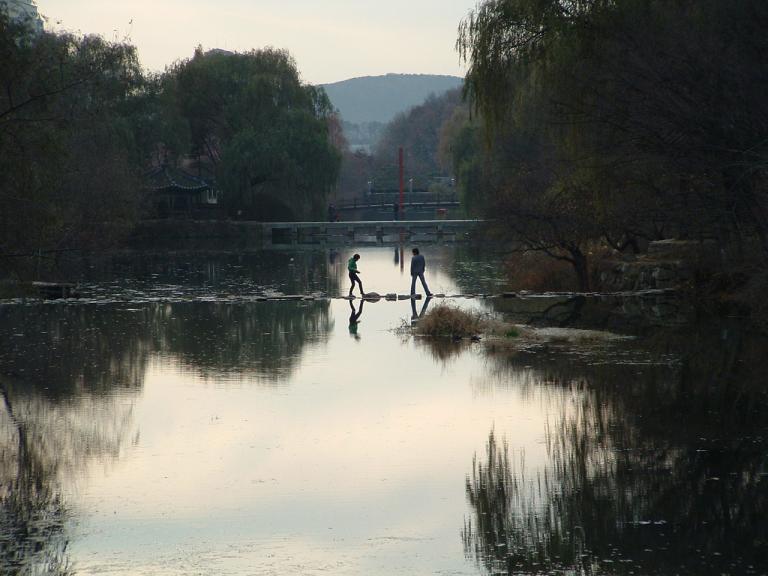
The purpose of all this is not to abandon the physical for the spiritual. Instead, the goal is to find the balance and interaction of the two.
When we truly balance the physical and the spiritual within ourselves, the sacred will open to us. But for now, that is nothing to worry about. For now, you can just learn to sit with a tree. And then maybe a rock. Someday a mountain, and on from there.
Sitting with a tree is the first step in experiencing the whole of existence as both physical and spiritual, unified in the sacred. Over time, this practice will force a complete reorientation to the universe. It creates not just a new belief, but an existential crisis that reverberates through our whole lives and echoes the world around us.
The idea of animism is cute. But the reality is as overwhelming as a Christian standing at the foot of God’s throne.(1)
Gaining access to the totality of ourselves means experiencing far more of the universe than we were ever taught exists. It means going beyond belief and beyond the self as we imagine it.
Magic and Animism
There is more to animism than talking to trees. Such practices provide a deeper understanding of the self that changes the way we interact with the world.
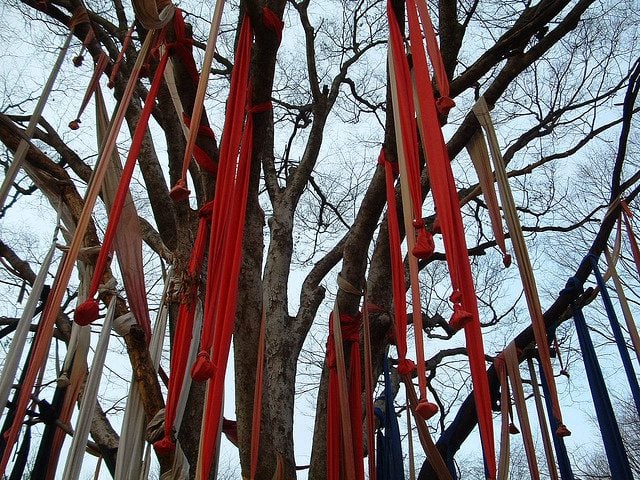
Animist practice is about more than accessing all of ourselves. Once we have made the connection inside, we need to strengthen these once-abandoned parts of who we are.
One way to do that is through the practice of magic. While everyday “magic” takes up one small corner of the totality of the existence, it is perfect for helping us develop the skills we need to grow.
Most practical magic teaches us to reorient ourselves to our environment. We learn how to become a new kind of person (whether that is a person with love in their life, or a person with a car, or a person with the self-sufficiency of employment).
But magic itself is not the goal. Though it is an excellent first step we cannot skip, we are capable of becoming far more than more effective members of society. There is value in that work, but it is not the end of what can be accomplished.
Human Nature
In order to understand what a person is, we must understand what a mountain is. We all know, as members of Western society, that mountains are not truly alive. And yet we also know, as animists, that they really are. And so mountains become a perfect metaphor for each of us.

We are, at the same time, very physical beings and spiritual ones. Any conflict between the two is only because we do not have a deep enough understanding of our own nature.
It is not uncommon, in spiritual circles, to come to believe that the spiritual is more important, more powerful, than the physical. Such an idea is dug deep in the Western psyche. But to be an animist is to be pragmatic about such things.
While training might take us places where we rely more on the spiritual than the physical, the goal in the long run is not to run away from the everyday world, but to accept its own depth and reality.
Being an animist only begins with greeting trees. It is not about the person-hood of other things, “alive” or not. It is, rather, an admission of our own unfathomable nature, matched only by the nature of each and every thing around us.
(1) Straight-up animism is not religion-lite. It is, rather, religion without a safety net.









